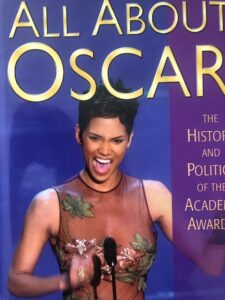UK (J. Arthur Rank-Gabriel Pascal)
Serving as producer and director, British Gabriel Pascal gave this adaptation of the George Bernard Shaw play a full and elaborate treatment, with lush production values and stellar cast.
Pascal cast as the young Cleopatra Vivien Leigh, then at the prime of her beauty and fame (married to another royal at the time, Olivier), and Claude Rains as Julius Caesar, the man who instructs her in political and other skills.
Though faithful to the source material, some critics found the film wanting in terms of drama and energy. And overall, this version is uneven in every respect, narrative, characterization, tempo.
Even so, there are some standout scenes, a result of the acting and of the cinematography, courtesy of the work of no less than four lensers: Freddie Young, Robert Krasker, Jack Hildyard, and Jack Cardiff (who later became a director), all Oscar nominees and winners for other films.
Grade: B (*** out of *****)
| Caesar and Cleopatra | |
|---|---|

theatrical release poster
|
|
Filmed in Technicolor with lavish sets, the production was reported to be the most expensive film ever made at the time, costing £1,278,000 (or £49.8 million at 2019 value), or US$5.15 million (or US$62.3 million at inflation-adjusted value) at contemporary exchange rates.
Caesar and Cleopatra held that record until Duel in the Sun, in 1946.
Director Gabriel Pascal ordered sand from Egypt in order to achieve the proper cinematic color. The production ran into delays because of wartime restrictions. During the shoot, Vivien Leigh, who was pregnant, tripped and suffered miscarriage. The incident triggered manic depression, leading to emotional breakdown, and halted production for five weeks.
Bernard Shaw on Screen
The film was described as a “box office stinker” at the time and almost ended Pascal’s career. It was the first Shaw film made in color, and the last film version of a Shaw play during his lifetime. After Shaw’s death in 1950, Pascal produced Androcles and the Lion, another Shaw-derived film, in 1952.
The film was a notable box office attraction at British cinemas, but a failure in the US. the top British box-office draw for 1946 was The Wicked Lady.
The film earned $1,363,371 in the US, making it one of the more popular British films ever released there. However, the film’s receipts fell short of initial expectations. Variety estimated that Rank lost $3 million (over $32 million at 2022 value) on the film after marketing, distribution, prints, insurance rights, and wages were taken into account.
Oscar Nominations: 1
Interior Decoration (color): John Bryan
Oscar Context:
The winner of the Art Direction Oscar was the family drama, “The Yearling,” starring Gregory Peck and Jane Wyman.
Credits:
Directed by Gabriel Pascal
Written by George Bernard Shaw (play {uncredited}, scenario and dialogue)
Produced by Gabriel Pascal
Cinematography F. A. Young F.R.P.S., Robert Krasker, Jack Hildyard, Jack Cardiff
Edited by Frederick Wilson, Joan Warwick (uncredited)
Music by Georges Auric
Production company: Gabriel Pascal Productions
Distributed by Eagle-Lion Films (UK)
United Artists (US)
Release dates Dec 11, 1945 (London); Sep 6, 1946 (US)
Running time 128 minutes (UK) 123 minutes (US)
Budget US$ 5.2 million or £1.3 million
Box office US $2,250,000 (US rentals), 815,007 admissions (France); £350,000 (US$1.4 million) (UK)











